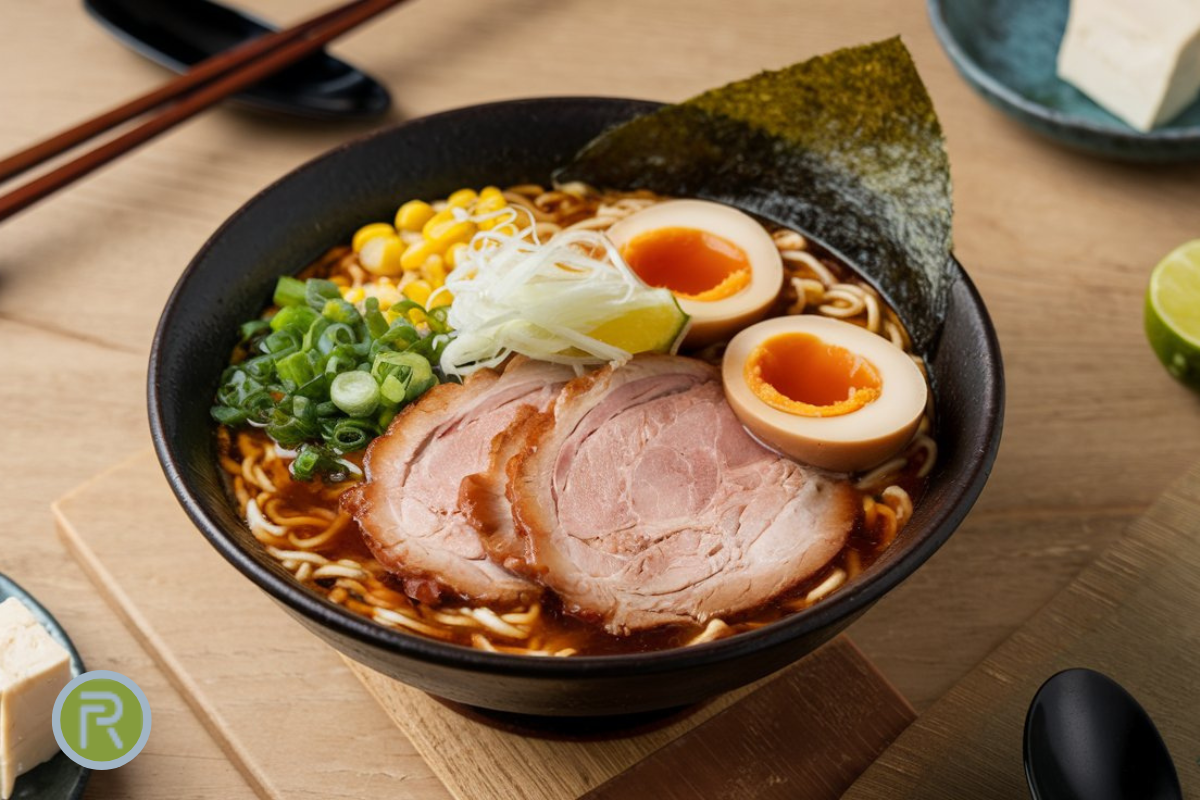Known for its robust tastes, chewy noodles, and rich broth, ramen is one of the most well-liked comfort foods in the world. However, because traditional ramen noodles are produced with wheat flour, people with celiac disease or gluten intolerance cannot use them. Don’t panic, though; gluten-free ramen is here to help!
The greatest gluten-free ramen products, homemade recipes, and answers to often asked questions will all be covered in this post so you may enjoy ramen without sacrificing your health.
What is Gluten-Free Ramen?
Ramen noodles prepared without wheat flour are known as gluten-free ramen, which guarantees that people with celiac disease, gluten sensitivity, or intolerance can safely eat them. Alternative flours like these are commonly used to make noodles instead of wheat:
- Rice Flour
- Brown Rice Flour
- Millet Flour
- Quinoa Flour
These noodles are entirely gluten-free and have a texture akin to regular ramen noodles.
See Also: Nutrition in Gram Flour: The Superfood You Need in Your Diet
Why Isn’t Traditional Ramen Gluten-Free?
The protein gluten, which gives noodles their elasticity and chewy texture, is found in wheat flour, which is used to make traditional ramen noodles.
Common Gluten Sources in Traditional Ramen:
- Wheat Flour in Noodles: Primary source of gluten.
- Soy Sauce in Broth: Many ramen broths contain regular soy sauce, which often has wheat.
- Flavoring Additives: Gluten-based thickeners may be present in certain ramen flavor packs.
Key Takeaway: When purchasing ramen, always read ingredient labels or select brands that have been certified gluten-free.
Top Gluten-Free Ramen Brands
It can be difficult to find them, but these brands are known for their flavor and quality:
1. Lotus Foods
- Made from millet and brown rice that are organic.
- Available in a variety of tastes, such as spicy kimchi and miso.
- Widely accessible at Costco and internet merchants.
2. Big Bowl
- Renowned for its flavorful broth.
- Easy to cook and has a great texture.
3. Koyo
- Organic components.
- Provides a variety of gluten-free flavors.
4. Ocean’s Halo
- Made with rice flour.
- Broth made with seaweed for extra nutrition.
Where to Buy:
- Costco
- Amazon
- Health food stores
See Also: Is Catfish Healthy Food? Nutritional Benefits, Side Effects, and Health Advice
How to Make Gluten-Free Ramen at Home
You can alter the flavors and make sure all the components are healthy by making your own.
Ingredients:
- 1 pack of gluten-free noodles (e.g., rice noodles)
- Gluten-free soy sauce or tamari
- Chicken or vegetable broth
- Fresh vegetables (e.g., spinach, mushrooms, green onions)
- Soft-boiled egg
- Protein of choice (chicken, tofu, or shrimp)
Instructions:
- Follow the directions on the package to prepare the gluten-free noodles.
- Add the ginger, garlic, and soy sauce to the heated soup.
- To the broth, add the protein and vegetables.
- Over the cooked noodles, pour the broth.
- Add some green onions as a garnish and a soft-boiled egg on top.
Tip: Tailor the spices and salt to your personal taste.
Is Instant Gluten-Free Ramen Available?
Yes, there are instant ramen choices without gluten from a number of manufacturers. These already contain seasoning packets and gluten-free noodles.
Top Instant Picks:
- Lotus Foods Instant Rice Ramen
- Dr. McDougall’s Gluten-Free Ramen
- Ocean’s Halo Instant Ramen
These choices are ideal for a hectic day because they are quick and simple to make.
Health Benefits of Gluten-Free Ramen
- Safe for Gluten-Intolerant Individuals: There is no chance of gluten-related problems.
- Easy Digestion: In general, noodles made of rice are easier to digest.
- Nutritional Value: Often enriched with additional nutrients.
- Customizable: Better control over ingredients is possible with homemade options.
Conclusion
A tasty and secure substitute for people with celiac disease or gluten allergy is gluten-free ramen. Enjoying a warm, comforting bowl of ramen without worrying about gluten is now easier than ever thanks to companies like Lotus Foods and Ocean’s Halo setting the standard.
Knowing the components and being mindful of hidden gluten sources will guarantee a safe and fulfilling dinner, whether you choose to make your own ramen or buy it from the supermarket.
See Also: Dishes of Pakistan: A Culinary Journey Through Traditional and Iconic Pakistani Foods
FAQs
Is there any ramen that is gluten-free?
Yes, there are certified gluten-free ramen alternatives available from companies like Lotus Foods and Ocean’s Halo.
Why isn’t ramen gluten-free?
Gluten is present in wheat flour, which is used to make traditional ramen noodles. Additionally, there are gluten-based components in several flavor packs and broths.
Is Buldak ramen gluten-free?
No, Buldak ramen noodles are not gluten-free; they usually contain wheat flour.
Do gluten-free noodles exist?
Indeed, there are several varieties of gluten-free noodles made from millet, quinoa, and rice.
Can I find gluten-free ramen at Costco?
Yes, well-known brands like Lotus Foods are available at Costco.




